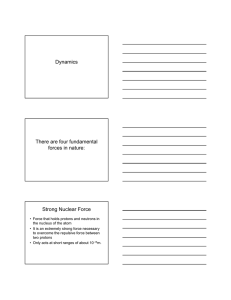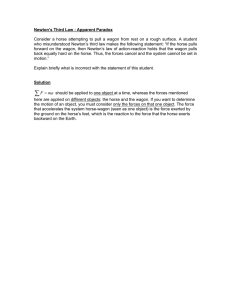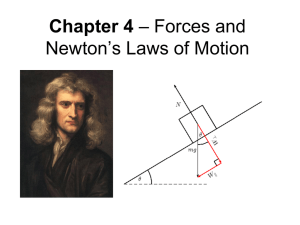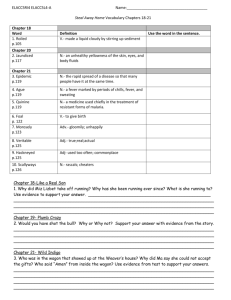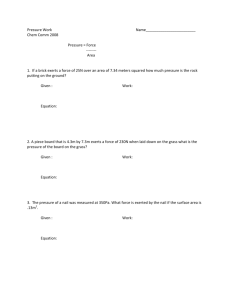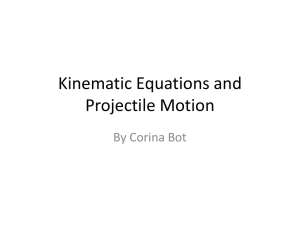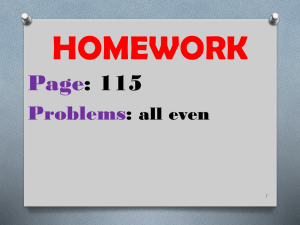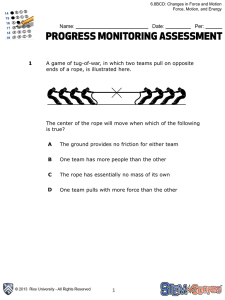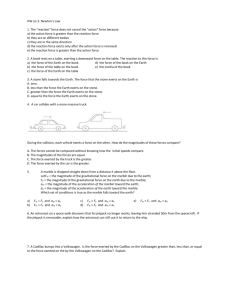Chapter 6 Newton*s Third Law of Motion
advertisement
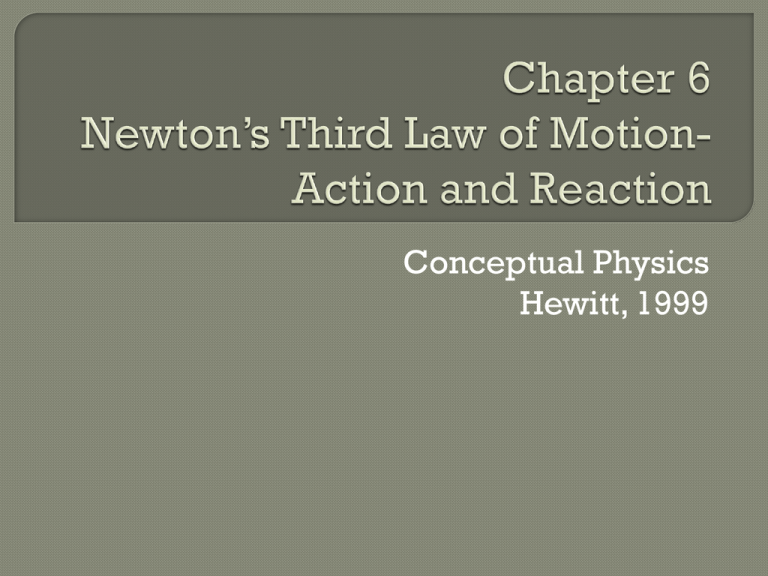
Conceptual Physics Hewitt, 1999 Interaction- mutual action of two objects • Required for a force to occur You can’t touch without being touched “Whenever one object exerts a force on a second object, the second exerts an equal force in the opposite direction on the first.” • FA on B = -FB on A Action force- causes the force Reaction force- reacts to the force in an equal but opposite way to the action force As objects react to each other, actionreaction objects doesn’t really matter. • Action: Object A exerts a force on Object B • Reaction: Object B exerts a force on Object A Mass and acceleration are inversely proportional Force and acceleration are directly proportional Example: Mallet & Post • Mallet: large mass, small acceleration • Post: small mass, large acceleration • Both have an equal but opposite force on them Example: Bullet being fired • http://www.youtube.com/watch?v=h3PUXbo3tCo&feature=related • http://www.youtube.com/watch?v=f9tCpLNBwxQ&NR=1 • http://www.youtube.com/watch?v=xSkxQxPThi4&feature=related If they cancelled, nothing would ever move! We need to consider what is in the “system” • System- the area around the force(s) that we are concerned with • If we only care about a football accelerating, we call the football the system • If we care about how the football and the foot interact, we can include them both in the system What is pulling what? • FGW- force of the ground on the wagon (friction) • FWG- force of the wagon on the ground • FHW- force of the horse on the wagon • FWH- force of the wagon on the horse (inertia) • FHG- force of the horse on the ground (applied force) • FGH- force of the ground on the horse (friction) Review Think Questions 1-18 & Explain 1-15
